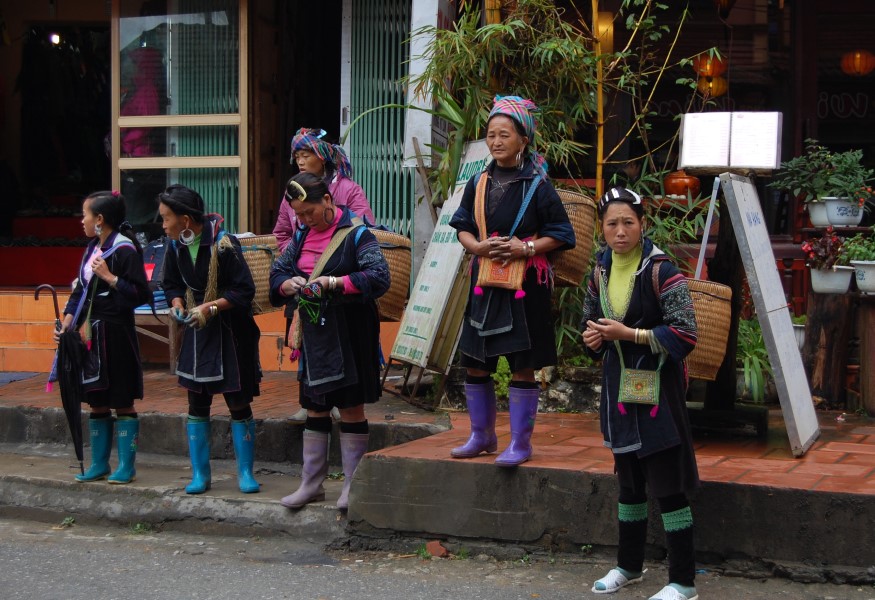In SE Asia, the struggles of the Hmong people are politically intractable. At the source, their ongoing struggle is because they were allied with American and French colonial ambitions in Vietnam and Laos. Unfortunately, it was for a losing cause that was not of their own making.
Nonetheless, colonialism is a war crime that is not easily forgotten. Indeed, the Hmong recklessly gambled with their future. Now they must face the consequences in hostile lands.
Origins of the Hmong People
Similar to the original Americans, the Hmong were immigrants who are not native inhabitants of their home country. In Indochina, the Hmong are an ethnic minority group that has lived in the region for only 200 years.
Their original home of over 2000 years is in the Yellow River region of China. At the behest of the Qing dynasty, the Hmong began a migration to Indochina beginning in the 18th century.
Forced Migration of the Hmong
The Qing Dynasty forced the Hmong to leave their home in China. This is despite the fact the Hmong had been living there for 2000 years. Ironically, the Qing dynasty had nomadic origins of their own.
Indeed, the Qing Dynasty were ethnic Manchu. The Manchus were descendants of the Jurchen people that originated in Manchuria. Additionally, the Jurchen clans did not become unified until the 17th century. After unification, they renamed themselves “Manchu” and then ruled China for 3 centuries as the Qing Dynasty.
Despite their minority origins, the Qing were unsympathetic to the plight of other ethnic groups in China. However, the Hmong people defied the oppression of their Manchu overlords. So the Qing labeled the Hmong as ‘Miao’ (‘barbarian’ or ‘savage’) and targeted them for genocide. As a result, some of the Hmong migrated to SE Asia and resettled in Northern Vietnam and Laos.
Hmong People Resettle in Northern Vietnam
In Vietnam, the Hmong people make up just over 1% of the population and they are classified as one of 54 ethnic minority groups. Additionally, the Hmong people are very diverse and they have many sub-ethnic groups such as the Flower Hmong, Black Hmong, Blue Hmong and several others. The Hmong are a common sight near tourist centers in Northern Vietnam, such as Sapa Township.

Hmong Allies During Indochina Wars
The Hmong people were initially recruited by the French colonialists in Vietnam to assist them during the first Indochina war. Indeed, the first Indochina war raged for 10 years and the Hmong people fought valiantly alongside the French.
Nonetheless, the French Military and their Hmong allies were ultimately defeated by the under equipped and severely disadvantaged Vietnamese Army. So the French surrendered in 1954 and left the Hmong behind to fend for themselves.
As a result, the future of the Hmong people in Northern Vietnam became very unstable because they faced the justified wrath of the Vietnamese.
Unfortunately, the Americans would immediately impose their own colonial ambitions onto the Vietnamese soon after the French surrender. The vain ambitions of the US Military then escalated significantly after they staged the Gulf of Tonkin incident in order to instigate the second Indochina war.
Indeed, the plight of the Hmong people did not go unnoticed by the CIA. As a result, they made easy targets for American agents. Indeed, the Hmong people would once again become allied with foreign invaders. Additionally, the US Military recruited them on a much larger scale as compared to the first Indochina War.
American Objectives of the Hmong Fighters
The Ho Chi Minh Trail was a vital supply line for the Viet Cong fighters in the south. As a result, disruption of the Ho Chi Minh trail was the primary objective of the Americans. However, the Americans had limited success when engaging the Vietnamese resistance fighters in ground warfare.
Therefore, the US Military recruited the Hmong fighters to serve as proxy ground forces acting on behalf of the US military in Vietnam and the “secret war” in Laos. The Americans were now free to conduct gratuitous carpet bombing of Northern Vietnam, Cambodia and Laos working in unison with the Hmong on the ground.
Surrender of the US Military
The massive destruction the US caused was ultimately ineffective because in the end the US Military gave up and went home. As a result, the Hmong people would once again face the justified wrath of the Vietnamese army. However, in Laos they also faced the wrath of the Pathet Lao.
The result was a humanitarian disaster and a mass migration of over 300,000 refugees. Although the US eventually agreed to relocate 100,000 refugees to the US, most were left behind to fend for themselves. Indeed, many of the thousands left behind are living in fear hiding in the jungles of Laos and Thailand.
The Hmong People are American Heroes
The US Military widely respected the Hmong fighters and their efforts were at times heroic. Indeed, the Hmong had saved many downed US pilots from certain death. Additionally, an estimated 12,000 Hmong fighters would lose their own lives fighting for the Americans in Vietnam and Laos.
However, the US Government still does not recognize their existence. As a result, the US Government continues to withhold military honors from Hmong veterans. They also refuse to acknowledge or assist those who are still left behind to suffer.
The Hmong whom the US abandoned in Laos and Vietnam still face persecution at best and possibly death. Those who are able, flee to Thailand to meet their uncertain fate and possibly forced repatriation if they are found out.

